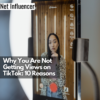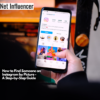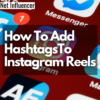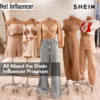Agency
The Creator Economy In 2025: TDD’s Sarah Boyd On What’s Actually Working In Influencer Marketing
“Every day, the landscape evolves dramatically,” notes Sarah Boyd, Co-CEO and CRO of The Digital Dept. (TDD), reflecting on the creator marketing trends of 2025. “Brands and agencies have become increasingly sophisticated in this space, now adept at driving measurable ROI and understanding the specific expectations they can place on influencers. It’s far from where the industry was just 18 months ago when brands would spend tens of thousands of dollars with little more than hope for a return.”
As a leader of TDD, a talent management and brand strategy agency with 70 employees, managing over 250 creators, and putting together influencer marketing strategies with major brands like Crocs, Keurig, and Dr. Pepper, Sarah would know. Sarah has direct insight into the transformation of creator marketing from experiential campaigns to measurable business strategy and shared her insight into what is working in the Creator Economy in 2025 with us.
More Data-Driven Partnership Decisions in 2025
The approach to creator partnerships has shifted dramatically. Sarah notes that brands now analyze every aspect of potential collaborations, requiring proven performance metrics before finalizing agreements. “They’re approaching investments with precision and looking at every dollar they’re spending and making sure that there’s an ROI attached to it, whether a creator that can drive more engagement through views or a high click-through rate..”
This increased analysis has transformed how agencies like TDD present talent to brands. “Many of the brands and agencies ask for screen grabs and they want to see how many clicks they drive or past sales they’ve done for similar partnerships,” Sarah explains. Companies examine performance across multiple platforms, from LTK to Amazon Associates, seeking evidence of measurable results.
The shift creates new challenges for talent management agencies to demonstrate value. “As a manager, you have to fight far harder for your creators,” Sarah notes. “You have to provide that additional value, whether that’s additional posts or you might have to lower your rate in order to compete for the campaign. You have to really be competitive in this industry as opposed to just sitting back and saying, ‘Here’s my rate, take it or leave it.'”
This market reality establishes a direct connection between rates and performance. “The brand or agency may walk away from the opportunity to work with a talent and go to someone similar with the same analytics or better in order to get a lower rate,” Sarah explains. “So it’s really thinking about the supply and demand in this industry and how you can compete and stand out as a creator and be one where brands want only them.”
The transformation appears in company structures as well. “Brands understand this. They’ve been hiring influencer teams now within their company,” Sarah observes. “That didn’t happen years ago. There was no influencer marketing specialist, and it was just marketing. So they have specialized people that are very experienced in this type of work.”
The Rise of Targeted Influence
Sarah highlights a significant insight: larger follower counts don’t necessarily translate to better results. “You could pay Charli D’Amelio 7 figures or hire 500 micro and mid-tier creators. And this will drive the micro and mid-tiers to drive more conversions and potentially change your business,” she asserts.
This understanding leads brands to restructure their creator strategies. Rather than focusing on celebrity endorsements, many achieve better results with diverse partnerships featuring smaller creators with a highly engaged audience. “That’s why our BRANDEdit events are great,” Sarah explains. “It’s lots of micro to mid-tier creators. They want to be there for free, meeting brands, getting gifting, building their relationships, and they have an influence on their specific demographics.”
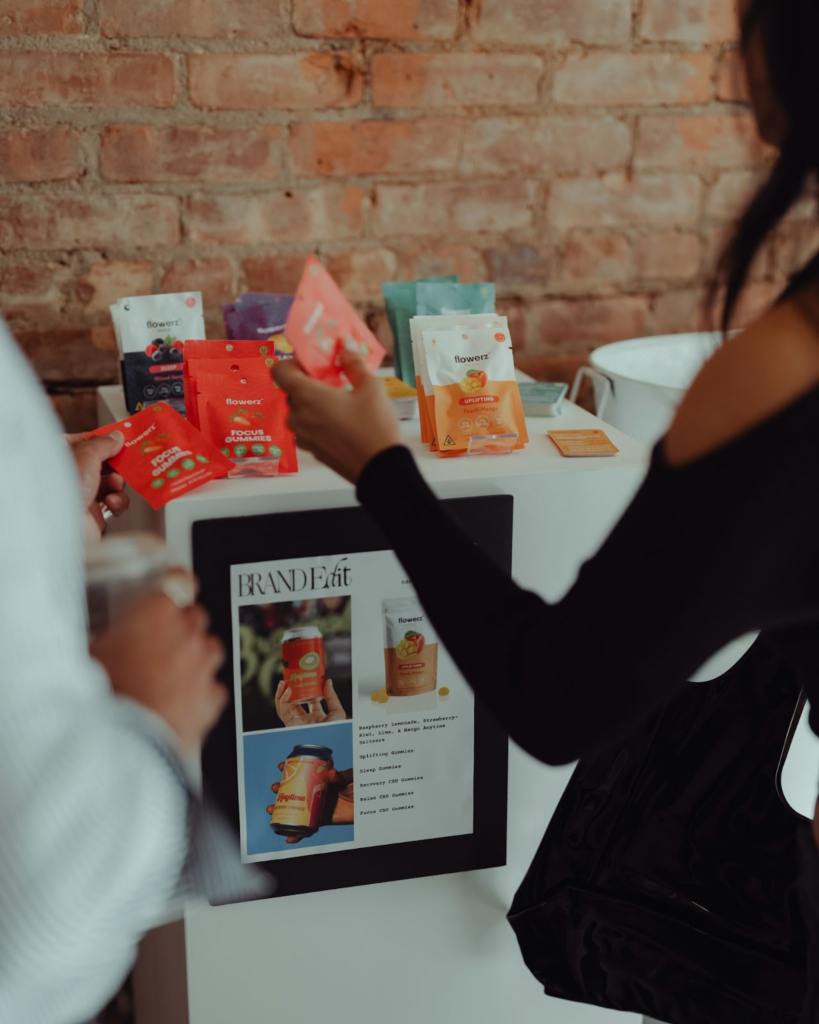
Credit: Holland Clement
Smaller creators excel at building genuine connections with specific audiences. “I think that’s the way of the future, which is finding niche creators who are experts in their own field and going deep into those smaller creators but going wide and booking a lot of them,” Sarah emphasizes. This approach reduces risk for brands by distributing investments across multiple creators who collectively deliver stronger results.
Sarah sees this strategy succeeding particularly with DTC brands focused on specific performance metrics. “We work with many DTC brands, and they’re very specific in looking for an ROI on their campaigns. So we do have quite a few high-converting talent who do very well on Amazon Associates, LTK, and ShopMy..” These creators consistently deliver valuable results despite not being household names.
The focus on smaller creators reflects changing audience engagement patterns. “Their audience is loyal to them, and they trust what they say,” Sarah notes. This established trust, combined with higher engagement rates and natural integrations, often generates better performance metrics than celebrity collaborations.
Strategic Long-Term Partnerships
Brand-creator relationships now emphasize sustained collaboration. “We’re looking at doing longer-term campaigns with many of the brands they currently work with, whether that’s an annual ambassadorship or a partnership where they’re creating a product line within the product line,” Sarah shares. This move from single posts to deeper integration shows a mature understanding of the value of creator partnership.
Sarah points out that successful creators often limit sponsored content. “Many of our high-converting talent convert very well because they’re not doing an ad every single day of the month. They keep their content very true to who they are. They’ll do maybe six to ten ads a month.”
Sustainable partnerships require diversification beyond sponsored posts. “How else can we help them grow as a creator? By doing another sort of campaign. Maybe they’re doing a speaking engagement, a long-term ambassadorship, creating a product line, and monetizing their platforms in other ways.” This strategy prevents audience fatigue while building stronger brand connections.
TDD’s portfolio demonstrates this evolved approach. Sarah references Susan Yara, part of GlowLab, who created Naturium “with a really strong business backed partner, and that was a huge success.” However, she notes industry limitations: “The fashion industry doesn’t have much room for margin. It might be fun for them, but if they’re looking for a long-term exit, I suggest diversifying again.”
Brands now think differently about activation strategies. “Outside of just the traditional brand deal, what are ways you can activate influencers in an organic way that translates to an ROI?” Sarah asks. She emphasizes relationship building: “They have that one-on-one relationship as opposed to just brand XYZ working with influencer number 455 on their list.”
Multi-Platform Strategy for Sustainability
With platform uncertainties, Sarah recommends presence across multiple channels. “We always suggest that all of our talent should be on at least two to three platforms consistently,” she advises. Beyond social media, she recommends owned channels: “Create a newsletter, create a website, a substack, something where you can own that customer data. Because, at the end of the day, you don’t own any of these platforms. You’re at their mercy.”
This shift toward owned media marks a change in sustainable creator businesses. “If you have an email database of tens of thousands of loyal customers, that’s exciting for a brand because it gives you direct access to new potential customers,” Sarah explains.
The strategy requires comprehensive content distribution: “Repurposing that content, putting it on YouTube shorts, putting it on Instagram and Facebook, and utilizing all of these other platforms to continue growing.” This maximizes content value while protecting against platform dependencies.
TDD explores new revenue opportunities across platforms. “We’re partnering with multiple agencies that can help with monetization on Facebook and Instagram through ads,” Sarah reveals. “It’s taking content they’ve used over the years, editing it, repurposing it, and putting it on Facebook and Instagram from the ad perspective.”
Approaching new features requires strategic experimentation. “Sign up for all of the bonus opportunities. Sign up for every offering that the different platforms have,” Sarah advises. She mentions Snapchat as an example: “Snapchat has a lot of perks right now with monetization and lots of great opportunities there. And that’s a platform that a lot of our 30+ talent are like, ‘Wait, what? Snapchat?'”
Future Trends in Creator Economics
Sarah identifies a need for industry standardization, particularly in pricing. “I feel like it’s still a bit like the Wild West,” she notes, advocating for standardized rate cards based on metrics like CPMs and link clicks.
She emphasizes the ongoing importance of genuine content: “I love watching the creators fail at life and trying to hold it all together. And they’re super honest and authentic. It’s shareable, fun, relatable content.”
Sarah shows particular enthusiasm for creators breaking traditional patterns: “I love seeing creators that are not the traditional ‘bloggers’ since this industry started. They’re just regular people living a regular life and just blew up on TikTok or one of the platforms because they’re just real people I can relate to.”
While technology plays an increasing role, limitations exist. Sarah sees AI tools as efficiency enhancers – “whether it’s updating spreadsheets for me or basically being my virtual assistant” – but emphasizes human connection remains essential: “You have to have that personal relationship. I don’t think they will take over our jobs, but they’ll make life easier for us and help with more manual tasks.”
Creator brand development success requires sophisticated skills. “If you want to start your own business, definitely get the right team on board to help you implement,” Sarah advises. She highlights operational complexities: “They forget there’s customer service, there’s returns, there’s shipping, there’s lots of emails. All of these things you don’t think about when you see the shiny light and start your own business.”











